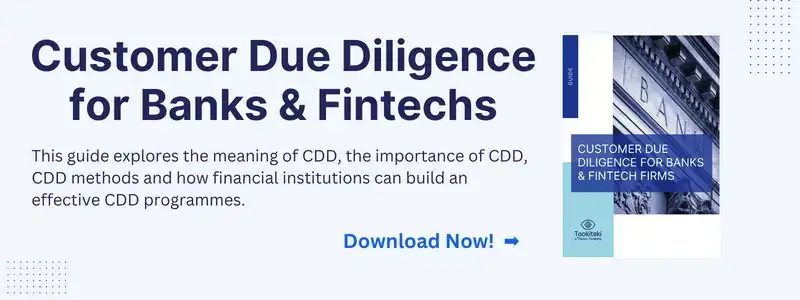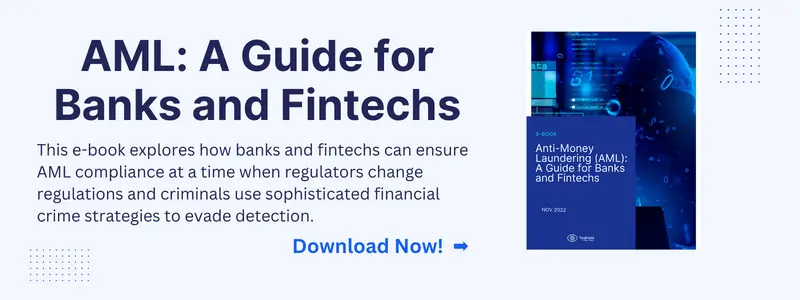Your Guide to Simplified Due Diligence (SDD) in AML Compliance
In the constantly evolving world of Anti-Money Laundering (AML) regulations, staying compliant without compromising operational efficiency is a balancing act. One term you might have come across is Simplified Due Diligence (SDD). But what exactly does it mean, and how can it be effectively employed without running afoul of regulatory mandates?
This guide aims to break down the complexities of SDD, making it understandable even if you're not a legal expert. We'll cover what qualifies for SDD, how to go about the process, and pitfalls to avoid. Whether you're a seasoned compliance officer or new to the field, this article is designed to equip you with the knowledge you need to implement SDD successfully.
What is SDD (Simplified Due Diligence)?
Imagine you're buying a second-hand bicycle. You wouldn't just hand over your money without first checking that the brakes work, right? The same principle applies to the financial world; before businesses establish a relationship with new customers, they need to know who they're dealing with. This process is called due diligence. Simplified Due Diligence (SDD) also known as Simplified Customer Due Diligence, is a lighter version of this check-up, meant for low-risk clients.
SDD allows you to verify the customer's identity quickly and efficiently, without going through extensive procedures. It is the most basic level of customer due diligence, designed for individuals or businesses with a very low risk of money laundering or terrorist financing.
The steps involved in the SDD process include customer identification, verification of beneficial ownership, understanding the purpose and nature of the relationship, and ongoing monitoring. By following these steps, businesses can ensure that they have a basic understanding of their low-risk customers while minimizing the burden of extensive due diligence procedures.
Example: Let's say you operate a small online store. For low-value transactions, you might not need to know the customer's entire life history. Here, SDD comes in handy.
Eligibility Criteria for SDD
Not every Tom, Dick, or Harry is eligible for SDD. Regulations typically reserve it for clients with lower risks of money laundering or terrorist financing. So what's the criteria? Generally, the customer's transactions should be small and infrequent, and their source of funds should be transparent.
To qualify for SDD, certain criteria must be met, which can vary depending on the jurisdiction. SDD is typically required when establishing a business relationship, when there are suspicions of money laundering or terrorist financing, when the financial institution questions the adequacy of previously obtained customer identification data, or when conducting occasional transactions above a specific threshold.
Example: A retired school teacher who occasionally makes small investments could be an ideal candidate for SDD.
SDD Process for Customer Onboarding
If a customer is eligible for SDD, the next step is onboarding them. This involves collecting some basic information like their name, address, and reason for conducting business. You don't need to go deep, like you would in a standard due diligence process. But you still have to be thorough enough to avoid pitfalls.
The steps involved in the SDD process include customer identification, verification of beneficial ownership, understanding the purpose and nature of the relationship, and ongoing monitoring. By following these steps, businesses can ensure that they have a basic understanding of their low-risk customers while minimizing the burden of extensive due diligence procedures.
Example: Think of it like a quick health check-up instead of a comprehensive medical exam.
Risks and Limitations of SDD
No process is foolproof. SDD has its limitations and can be prone to misuse if not carefully managed. It's essential to regularly review SDD classifications to make sure they still apply.
AML Simplified Due Diligence (SDD) may not be suitable for customers with changing transaction patterns or increased risk. As a business, it's crucial to monitor your customers' activities to ensure they still meet the requirements for SDD. If a customer who was previously eligible for SDD starts conducting larger transactions, it could indicate a higher risk of money laundering or terrorist financing. In such cases, it's advisable to shift them to the standard due diligence process to gather more detailed information and mitigate potential risks.
Additionally, SDD has its own limitations. While it provides a lighter and quicker verification process for low-risk customers, it may not uncover all potential risks associated with them. SDD focuses primarily on customer identification, beneficial ownership verification, and understanding the nature of the relationship. However, it may not delve deep into other aspects, such as source of funds or the customer's background. Therefore, businesses must be aware of these limitations and supplement SDD with additional measures, such as ongoing monitoring and periodic reviews, to ensure comprehensive risk management.
In conclusion, while AML Simplified Due Diligence offers a streamlined process for low-risk customers, it's important to regularly review and reassess their eligibility for SDD. Monitoring customer activities and promptly identifying any changes in risk patterns can help businesses take necessary actions, such as shifting customers to a more robust due diligence process when required. Additionally, understanding the limitations of SDD and implementing supplementary risk management measures will contribute to a more effective overall due diligence strategy.
Example: Let's say a customer who initially qualified for SDD starts making larger transactions. In this case, you might need to shift them to standard due diligence.
Best Practices for Implementing SDD
Getting SDD right is crucial for both compliance and operational efficiency. Here are some best practices:
- Implementing Simplified Due Diligence (SDD) is essential for businesses to maintain compliance and improve operational efficiency. To ensure success, there are several best practices to follow. Firstly, it is crucial to be proactive and not wait for red flags to review SDD criteria. Regularly reviewing and updating the classification of customers will help identify any potential risks that may have been missed initially.
- Secondly, businesses should automate the SDD process where possible. By utilizing software and technology, the SDD process can be made faster and more reliable. For instance, integrating machine learning algorithms that can sift through customer data to identify suitable candidates for SDD can significantly reduce manual labor and streamline the process.
- Lastly, regular audits are necessary to ensure that SDD cases still meet the established criteria. As business relationships and customer profiles change over time, it is important to consistently review SDD cases to identify any updates or changes that need to be made. This helps to maintain the effectiveness of the SDD process and ensures that any potential risks are identified and addressed promptly.
By implementing these best practices, businesses can enhance their SDD process and effectively manage customer due diligence. This not only improves compliance with regulatory requirements but also helps to safeguard against potential risks and maintain a strong reputation in the financial world.
Example: Consider integrating machine learning algorithms that can sift through customer data to identify suitable candidates for SDD, thus reducing manual labor.
Difference Between Simplified, Standard, and Enhanced Due Diligence
Just like a traffic light has three colors, due diligence also comes in three varieties. Simplified Due Diligence (SDD), Standard Due Diligence (CDD), and Enhanced Due Diligence (EDD) are three different levels of due diligence used to assess the risk associated with customers. Here's a simple breakdown of their differences:
- SDD: Suitable for low-risk customers, SDD requires basic information and is like a 'green light' where things are generally good to go.
- CDD: This is the 'yellow light' of due diligence and requires a bit more caution and scrutiny. CDD involves verifying customer identity, assessing the nature of the relationship, and understanding the purpose of the transactions.
- EDD: Think of EDD as the 'red light' where high-risk clients require additional layers of scrutiny. EDD involves a more in-depth investigation, including detailed financial history, employment verification, and even social connections.
While SDD focuses primarily on customer identification and understanding the nature of the relationship, it may not delve deep into other aspects like the source of funds. Hence, it's important for businesses to be aware of the limitations of SDD and supplement it with additional risk management measures when necessary.
Final Words
In conclusion, Simplified Due Diligence (SDD) is not a way to bypass regulations but rather a streamlined approach designed for low-risk customers. By implementing SDD wisely, businesses can save time and resources while remaining compliant with Anti-Money Laundering (AML) laws. It is important to understand that SDD may not uncover all potential risks associated with customers, so it is crucial to regularly evaluate and update your due diligence processes.
By following these best practices, being proactive, automating processes where possible, and conducting regular audits, financial institutions can strengthen their due diligence efforts and mitigate the risks associated with money laundering and other financial crimes. Stay informed about the latest updates in AML regulations and adapt your processes accordingly to ensure compliance and protect your business from potential risks. Remember, thorough due diligence is essential for maintaining the integrity of your institution and safeguarding against financial crimes.
To ensure effective Customer Due Diligence measures and stay ahead in the fight against financial crimes, financial institutions can benefit from advanced AML solutions provided by Tookitaki. With their cutting-edge technology and expertise, Tookitaki offers innovative solutions that automate and enhance the due diligence process, making it easier for compliance officers to navigate the complexities of AML regulations. Don't miss out on the opportunity to improve your customer onboarding process - try Tookitaki's advanced AML solutions today!
Frequently Asked Questions (FAQs)
When can you do simplified due diligence?
You can perform SDD when a customer poses a lower risk for money laundering or terrorist financing.
What are the three types of due diligence?
The three types are Simplified Due Diligence (SDD), Customer Due Diligence (CDD), and Enhanced Due Diligence (EDD).
What is the difference between standard due diligence and simplified due diligence?
Standard due diligence is more detailed and is used for average-risk customers, while simplified due diligence is a lighter process used for low-risk customers.
Anti-Financial Crime Compliance with Tookitaki?





